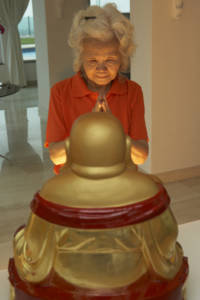Buddhism: A Religion, Philosophy or Both?

Around 1 percent of Canadian residents follow Buddhism. Practitioners seek meaning, an explanation for human suffering, and ways to live better lives.
According to the latest National Household Survey, around 1.1 percent of Canadian residents follow Buddhism. Although that’s a small percentage out of a nation of 34 million people, Buddhist words and concepts have made their way into common usage. However, there’s much more to this way of life than you might realize, and it comes with complex sets of beliefs and concepts.
Ancient Origins in India
The Canadian Encyclopedia revealed that Buddhism may have originated around 2,500 years ago from the teachings of Siddhartha Gautama, a prince who was born in either northern India or southern Nepal. Legend holds that around age 29, the sheltered royal renounced his palace comforts to adopt an ascetic life after encountering three men in miserable states: one elderly and frail, another with a terrible illness and a third who had just died. After six years living in austerity, he is said to have become “enlightened” and chose to follow a “middle way,” embracing several key tenets:
- the impermanence of existence (anitya)
- the eventual dissatisfaction and suffering in ordinary life (duhkha)
- the lack of a permanent soul or self (anatman)
- a cessation of the drives that fuel the ongoing cycle of suffering and rebirth (nirvana)
Upon reaching these realizations during meditation underneath the legendary Bodhi Tree in India’s modern-day Bihar province, he began sharing them with others.
A Unique Way of Life
While Buddhism is typically classified as a religion, some followers regard it as a philosophy instead. BuddhaNet’s introductory guide revealed that it can be a way of life, instructing and inspiring its adherents to adopt some key behaviors and practices:
- leading an ethical life
- remaining aware of one’s thoughts and actions
- cultivating wisdom and understanding
The Canadian Encyclopedia calls Buddhism a “transformative teaching,” adding that many scholars disagree over its classification as a religion. For one, it does not focus on the reverence or worship of any deities. Conversely, it offers liberation from “samsara,” its term for a cycle of suffering resulting from desires fueled by craving and ignorance. Moreover, it has branched into multiple traditions:
- Theravada, based on Pali texts originating in southeast Asia
- Mahayana, arising from Sanskrit texts in northern India
- Vajrayana, commonly called the “Thunderbolt” version
These schools of Buddhism have led to more offshoots, such as China’s Zen Buddhism derived from Mahayana traditions. Additionally, Buddhism does not exclude followers from adopting other belief systems alongside it. For example, it’s not uncommon for Chinese people to observe both Buddhist and Taoist practices.
Canadians Encountering Buddhism
Unsurprisingly, the Canadian Encyclopedia discloses that most Canadians encounter Buddhism either through Asian immigrants who follow it or while attending higher education institutions. Japanese and Chinese workers who emigrated here were the first to import Buddhism, followed by later settlers from India. Meanwhile, public colleges and universities, such as the University of Calgary, began adding Buddhist studies to their program offerings in the middle of the 20th century.
Nevertheless, Buddhism’s rise in popularity in the West has also brought with it misconceptions about its imagery and terminology. A 2016 article in Everyday Feminism describes how its icons and concepts have fallen prey to cultural appropriation, with examples such as the inclusion of Buddha images in mass marketing and the misuse of the word “Zen.” Author Kim Tran cautions readers to give this faith the same level of reverence as with Judeo-Christian religions.
Multifaceted Traditions and Practices
Just as Christianity or Islam each has many different sects and traditions, the same is true of Buddhism. It has benefited from over two millennia of development while taking root in multiple parts of the world. As one of the major belief systems on the planet, its followers seek meaning, an explanation for human suffering and ways to live better lives.

